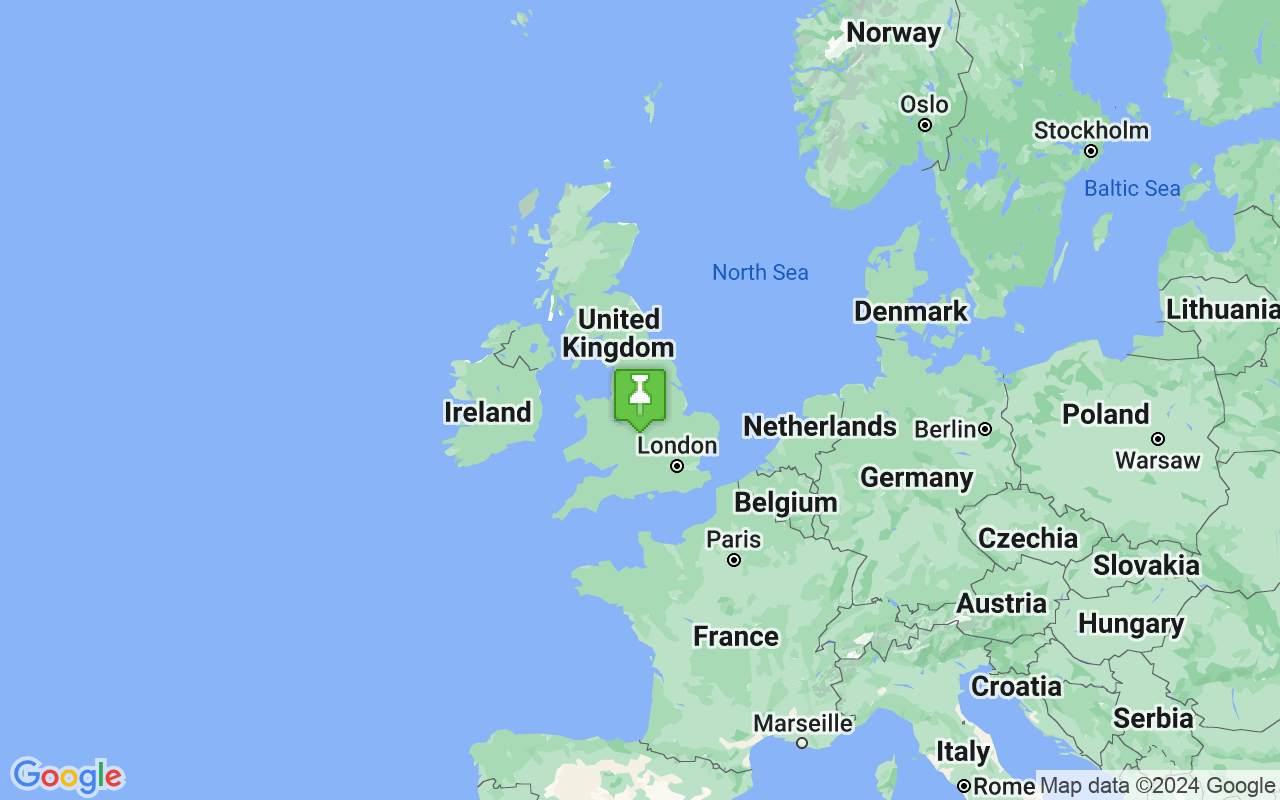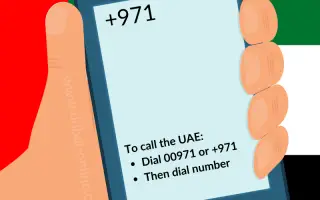If you need to make a phone call to the United Kingdom, there are a few things you’ll need to know first.
The UK’s country code is 44, and you’ll need to dial this before the area code and local number.
To call internationally to the UK, you’ll also need to use the international access code. This is 00 from a fixed line or + from a mobile phone.
With these simple tips, you can easily make calls to the UK from the UAE or anywhere in the world.
How to Call the United Kingdom from Dubai (United Arab Emirates)
To call a telephone number in the United Kingdom from Dubai or the United Arab Emirates:
- Dial the international call prefix. For calls from Dubai (United Arab Emirates), this is 00 (or ‘+’ from mobile phones).
- Dial the country code for the United Kingdom – 44.
- Dial the subscriber number, omitting the first zero if there is one.
Landlines – City/Area Codes in the UK
Area codes for a selection of the biggest towns and cities in the UK are listed below:
- Aberdeen – 01224
- Belfast – 02890, 02895
- Birmingham – 0121
- Bolton – 01204
- Bournemouth – 01202
- Bradford – 01274
- Brighton – 01273
- Bristol – 0117
- Cardiff – 029
- Coventry – 024
- Derby – 01332
- Dudley – 01384
- Edinburgh – 0131
- Glasgow – 0141
- Hull – 01482
- Leeds – 0113
- Leicester – 0116
- Liverpool – 0151
- London – 020
- Luton – 01582
- Manchester – 0161
- Newcastle – 0191
- Northampton – 01604
- Norwich – 01603
- Nottingham – 0115
- Plymouth – 01752
- Portsmouth – 023
- Preston – 01772
- Reading – 0118
- Sheffield – 0114
- Southampton – 023
- Stoke-on-Trent – 01782
- Wolverhampton – 01902
A 0 prefix is used with the area code when calling a landline number from a different area within the UK or a UK mobile.
Do not dial the 0 prefix or area code when telephoning from a landline in the same area.
Do not use the 0 prefix with the area code when calling from overseas.
For example, to call a number in London XXXXXXXX :
- From a landline in London with the same area code, dial XXXXXXXX.
- From a landline in the UK outside London, dial 020 XXXXXXXX.
- From a UK mobile phone, dial 020 XXXXXXXX.
- From the UAE or another country, dial the international dialling code (00/+), the United Kingdom country code 44, the area code without the 0 prefix, and then the customer number, e.g. 00-44-20-XXXXXXXX or +44-20-XXXXXXXX.
Mobile Telephone Numbers in the UK
Mobile phone numbers in the UK begin with 07.
Do not include the 0 prefix when calling from outside the UK.
To call a mobile phone number in the UK from overseas, dial the international exit call prefix (00/+), the UK country code (44), and then the subscriber number without the 0 prefix e.g. 00-44-7XXXXXXXXX or +44-7XXXXXXXXX.

Landline Statistics in the UK
According to the World Bank, there were 44.14 fixed-line (landline) phone subscribers per 100 people in 2022.
In 2003 there were 57.92 fixed-line telephone subscriptions for every 100 people living in the UK.
Landline telephone subscription statistics by year for the UK are shown in the table below.
| Year | Landline Telephone Subscriptions (per 100 People) in the UK |
|---|---|
| 2022 | 44.14 |
| 2021 | 47.12 |
| 2020 | 48.81 |
| 2019 | 49.04 |
| 2018 | 47.43 |
| 2017 | 48.09 |
| 2016 | 49.70 |
| 2015 | 50.92 |
| 2014 | 51.31 |
| 2013 | 51.92 |
| 2012 | 52.03 |
| 2011 | 52.54 |
| 2010 | 53.23 |
| 2009 | 53.83 |
| 2008 | 55.38 |
| 2007 | 54.62 |
| 2006 | 55.67 |
| 2005 | 56.42 |
| 2004 | 57.63 |
| 2003 | 57.92 |
In the UK and most developed countries, the usage of landlines has been in decline as mobile telephones have become more popular. This is due to a combination of factors such as cheaper mobile phones, the decreasing cost of mobile phone calls, and the increasing range of features available on mobile phones.
Another reason for the decline in fixed-line usage is the increasing use of alternative communications methods such as VoIP (Voice over Internet Protocol).
However, there are still a considerable number of landline phone subscribers in the UK. For many people and businesses, they remain an important part of their communications mix.
UK Mobile Phone Usage Statistics
Data from the World Bank shows that in 2022 there were 120.82 mobile phone subscribers for every 100 people living in the UK.
This is a big increase from 2003 when there were 90.96 mobile phone subscribers for every 100 people.
The table below shows how mobile phone subscription statistics have changed in recent years.
| Year | Mobile Phone Subscriptions (per 100 People) in the UK |
|---|---|
| 2022 | 120.82 |
| 2021 | 118.57 |
| 2020 | 117.82 |
| 2019 | 120.85 |
| 2018 | 118.75 |
| 2017 | 119.73 |
| 2016 | 120.22 |
| 2015 | 121.50 |
| 2014 | 121.13 |
| 2013 | 122.35 |
| 2012 | 122.76 |
| 2011 | 121.93 |
| 2010 | 122.26 |
| 2009 | 122.87 |
| 2008 | 121.38 |
| 2007 | 120.53 |
| 2006 | 115.25 |
| 2005 | 108.43 |
| 2004 | 99.49 |
| 2003 | 90.96 |
UK Internet Usage Statistics
According to the World Bank, 96.68 per cent of the population of the UK were active internet users in 2021.
This is a significant increase from 2002 when only 56.48 per cent of the population were active internet users.
The table below shows how the percentage of the population using the internet in the UK has changed in recent years.
| Year | Individuals Using the Internet in the UK (% of Population) |
|---|---|
| 2021 | 96.68 |
| 2020 | 94.82 |
| 2019 | 92.52 |
| 2018 | 90.69 |
| 2017 | 90.42 |
| 2016 | 94.78 |
| 2015 | 92.00 |
| 2014 | 91.61 |
| 2013 | 89.84 |
| 2012 | 87.48 |
| 2011 | 85.38 |
| 2010 | 85.00 |
| 2009 | 83.56 |
| 2008 | 78.39 |
| 2007 | 75.09 |
| 2006 | 68.82 |
| 2005 | 70.00 |
| 2004 | 65.61 |
| 2003 | 64.82 |
| 2002 | 56.48 |
Time Difference
When making a telephone call to the United Kingdom (UK) from the United Arab Emirates (UAE), please note there is a time difference between the UK and the UAE.
The current time in the UK is . The date is .
The time in the United Arab Emirates is . The date is .
The time difference between UK (United Kingdom) and UAE is 3 hours.
Exchange Rate
The currency used in the UK is the British pound sterling (GBP).
Current exchange rates between the British pound and the UAE dirham (GBP to AED, AED to GBP) are:
- 1 British pound sterling (GBP) = 4.58 AED
- 1 UAE dirham (AED) = 0.22 GBP
Exchange rates on this page were last updated on .
Useful Information
The United Kingdom is a sovereign state located off the northwestern coast of continental Europe. It consists of four countries: England, Scotland, Wales and Northern Ireland.
Northern Ireland is the only part of the UK that shares a land border with another sovereign state, the Republic of Ireland. Apart from this land border, the UK is surrounded by the Atlantic Ocean, with the North Sea to its east, the English Channel to its south and the Celtic Sea to its southwest. The Irish Sea lies between Great Britain and Ireland.
The United Kingdom is a constitutional monarchy with a parliamentary democracy. The monarch is King Charles III. The UK Prime Minister is the head of government. The UK Parliament is bicameral, consisting of an upper house, the House of Lords, and a lower house, the House of Commons.
Apart from England, the countries have their devolved governments, each with varying powers, but such power is delegated by the UK Parliament, which may enact laws unilaterally altering or abolishing devolution.
The United Kingdom’s capital and largest city is London, a global city and financial centre. Other major cities in the UK include Birmingham, Manchester, Leeds, Glasgow, Liverpool, Cardiff, and Edinburgh.
The United Kingdom has fourteen Overseas Territories, the remnants of the British Empire which, at its height in the 1920s, encompassed almost a quarter of the world’s land surface and was the largest empire in history. British influence can be observed in the language, culture and political systems of many of its former colonies.
The United Kingdom has a temperate climate, with plentiful rainfall all year round.
Useful information about the UK:
- Two-letter Country Code (ISO 3166-1 alpha-2): GB
- Three-letter Country Code (ISO 3166-1 alpha-3): GBR
- Region: Europe
- Sub-region: Northern Europe
- Capital: London
- Area: 242,900 square km
- Language(s): English
- Borders: Ireland
According to the World Bank, in 2022 the population of the UK was 66,971,395.
In 2003, the population was 59,647,577. Over the last 20 years, the population grew by 7,323,818 (12.3%).
The total population by year for the UK is shown in the table below.
| Year | Total Population of the UK |
|---|---|
| 2022 | 66,971,395 |
| 2021 | 67,026,292 |
| 2020 | 67,081,234 |
| 2019 | 66,836,327 |
| 2018 | 66,460,344 |
| 2017 | 66,058,859 |
| 2016 | 65,611,593 |
| 2015 | 65,116,219 |
| 2014 | 64,602,298 |
| 2013 | 64,128,273 |
| 2012 | 63,700,215 |
| 2011 | 63,258,810 |
| 2010 | 62,766,365 |
| 2009 | 62,276,270 |
| 2008 | 61,806,995 |
| 2007 | 61,322,463 |
| 2006 | 60,846,820 |
| 2005 | 60,401,206 |
| 2004 | 59,987,905 |
| 2003 | 59,647,577 |
UK Map
The location of the UK can be seen on the map below.


